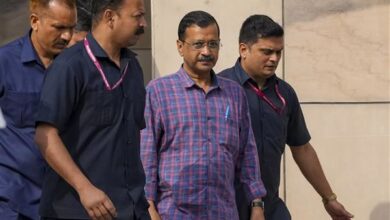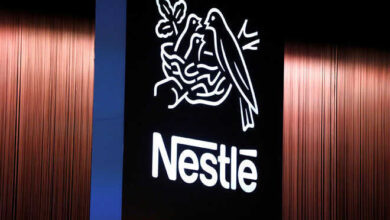-
NATIONAL

ED informs the court that Kejriwal’s use of high-sugar cuisine…
ED alleged in front of a court here on Thursday that Delhi Chief Minister Arvind…
Read More » -

-

-

-

-
UP STATE

FIR filed against a lady who claimed that her daughter’s…
At the Hazratganj police station in Lucknow, a formal complaint has been filed against six…
Read More » -

-

-

-
BIHAR

This Bihar girl, who topped IIT, placed 66th in BPSC,…
On Tuesday, the much expected Union Public Service Commission (UPSC) 2023 test results were made…
Read More » -

-

-

-
ENTERTAINMENT

On “The Great Indian Kapil Show,” Vicky Kaushal talks about…
Upcoming guests on Kapil Sharma’s Netflix series “The Great Indian Kapil Show” include Sunny Kaushal…
Read More » -
ENTERTAINMENT

In my films, women will always play key roles: Bojanov…
Payal Kapadia’s “All We Imagine As Light” opens in the Competition section of the Cannes…
Read More » -
ENTERTAINMENT

Director Srinivas Raju will direct a biography on the Ram…
There is a biography being developed on the Ram temple in Ayodhya. Srinivasa Raju is…
Read More » -
ENTERTAINMENT

‘O2’ will reveal a completely different me to the audience:…
Ashika Ranganath disagrees that her forthcoming medical thriller “O2” should be categorized as a movie…
Read More »
-
INTERNATIONAL

US ambassador to UN promises assistance to families of Japanese…
On Thursday, the US ambassador to the UN said that the US will support Japan…
Read More » -

-

-

-

-
HEALTH

Research: Nestle sweetens baby formula sold in India but not…
An investigation by Public Eye, a Swiss organization, and the International Baby Food Action Network…
Read More » -

-

-

-
LIFESTYLE

World Autism Awareness Month: Eight initiatives are launched by GNDU…
Eight projects were created by students in the BEd Special Education (MD) program at Guru…
Read More » -

-

-

-
SPORTS

Former World No. 1 Kento Momota retires from badminton at…
Kento Momota, a two-time world champion, said on Thursday that he is retiring from competitive…
Read More » -
SPORTS

Cristiano Ronaldo’s back salary of 9.7 million euros is required…
Cristiano Ronaldo, a Portuguese sensation, will get 9.7 million euros ($10.4 million) from Juventus as…
Read More » -
SPORTS

IPL 2024: Up to Rs 52,938 Could Be Spent on…
The cost of getting the finest seat for Royal Challengers Bengaluru’s Indian Premier League (IPL)…
Read More » -
SPORTS

Before the T20 World Cup, Rohit Sharma made a major…
Even though MS Dhoni has officially retired from international cricket, if you’re watching IPL 2024…
Read More »




















